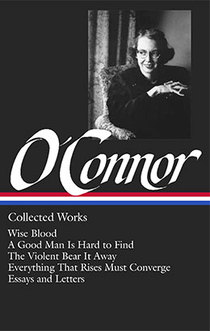From The Lincoln Anthology: Great Writers on His Life and Legacy from 1860 to Now
Interesting Links
Abraham Lincoln’s White House (The Lincoln Institute)
Abraham Lincoln: The path to the Emancipation Proclamation (Reader’s Almanac)
Previous Story of the Week selection:
Tolstoi Holds Lincoln World’s Greatest Hero
Leo Tolstoy, as told to Count S. Stakelberg
Buy the book
 The Lincoln Anthology: Great Writers on His Life and Legacy from 1860 to Now
The Lincoln Anthology: Great Writers on His Life and Legacy from 1860 to Now
110 selections by 95 writers, from William Cullen Bryant to E. L. Doctorow • 1,000 pages
Abraham Lincoln’s White House (The Lincoln Institute)
Abraham Lincoln: The path to the Emancipation Proclamation (Reader’s Almanac)
Previous Story of the Week selection:
Tolstoi Holds Lincoln World’s Greatest Hero
Leo Tolstoy, as told to Count S. Stakelberg
Buy the book
 The Lincoln Anthology: Great Writers on His Life and Legacy from 1860 to Now
The Lincoln Anthology: Great Writers on His Life and Legacy from 1860 to Now 110 selections by 95 writers, from William Cullen Bryant to E. L. Doctorow • 1,000 pages
 |
| Caricature by H. L. Stephens (1860) |
the swarm of office-seekers that beleaguered the White House, filling all the halls, corridors, and offices from morning till night. The patient good humour and the democratic habits of the new President led him to give audience to everybody, at all hours. Even the members of his Cabinet, sometimes had to force their way through the crowd and get the private ear of the President in the corner of a roomful of visitors, before they could impart to him grave matters of state.Such scenes had become de rigueur for new administrations during the nineteenth century and, immediately after the election, the humorist Artemus Ward (whose real name was Charles Farrar Browne) imagined hordes of applicants invading and occupying Lincoln’s home in Springfield, before the President-elect had even left for Washington. Ward’s satirical pieces, narrated by an uneducated traveling entertainer with a special knack for malapropism, were enormously popular and would sometimes acquire the aura of fact; the Daily Illinois State Register claimed that Ward had actually advised Lincoln to appoint to his cabinet “showmen, as showmen ain’t got nary darned principle”—a line lifted nearly verbatim from the following story.
But perhaps the greatest accolades for Ward’s satire came from Lincoln himself, who esteemed the humorist, often welcomed him to the White House, and even opened the September 22, 1862, meeting in which he announced the Emancipation Proclamation by reading to the mostly appalled cabinet members a chapter from Ward’s latest book. According to Judge Hamilton Ward, who claimed to have heard the story from Secretary of War Edwin M. Stanton, it was on this occasion that Lincoln allegedly delivered the now-famous (but probably apocryphal) quote, “Gentlemen, why don't you laugh? With the fearful strain that is upon me night and day, if I did not laugh, I should die.”
* * *
I hiv no politics. Nary a one. I’m not in the bisniss. . . . If you don't see the full story below, click here (PDF) or click here (Google Docs) to read it—free!This selection may be photocopied and distributed for classroom or educational use.




